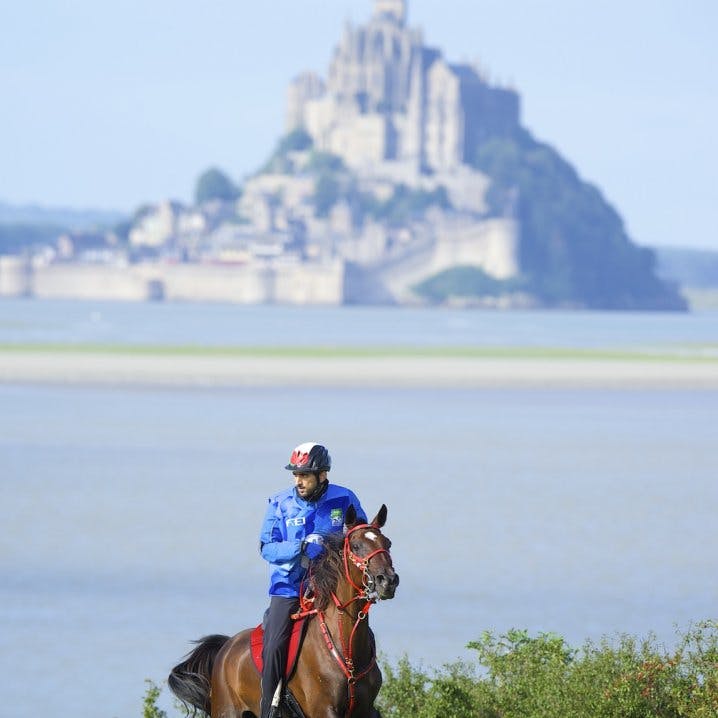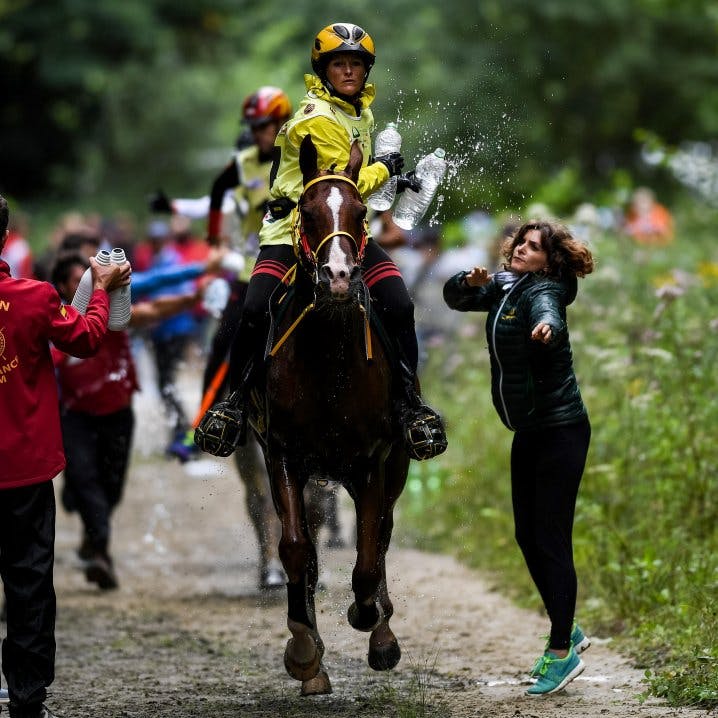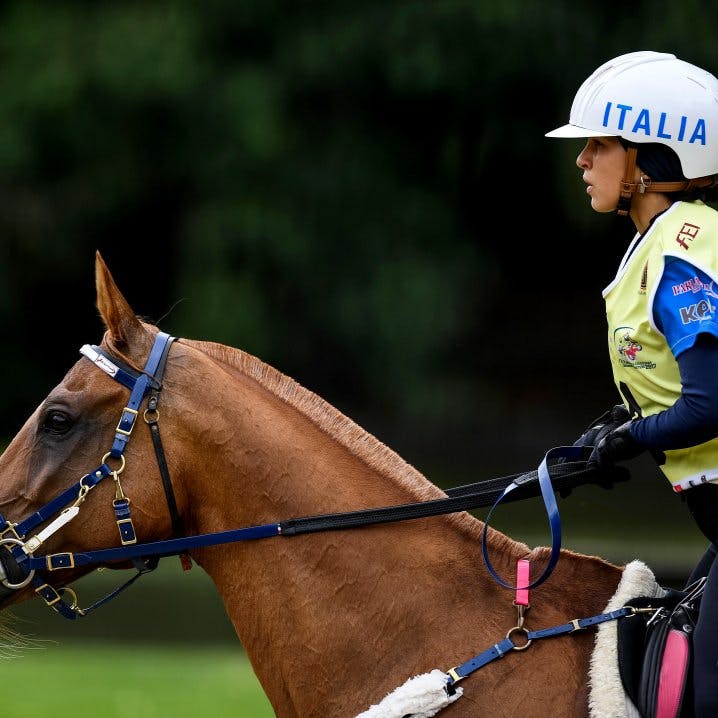This article was produced in association with the FEI
Get ready for some seriously long hours in the saddle. Endurance riding is an equestrian discipline where riders race long-distance on horseback along country trails, testing both their physical and mental skills. In events run by the international governing body for equestrian sport (the Fédération Equestre international, or FEI), those distances range from 80km (50 miles) to 160km (100 miles), all in a single day.
Manuel Bandeira de Mello is Endurance Director at the FEI. “Endurance riding tests the speed and endurance of a horse and challenges the rider over their effective use of pace, thorough knowledge of their horse’s capabilities and the ability to cross all kinds of terrain,” he explains. “Although the rides are timed, the emphasis is on finishing in good condition rather than coming in first.”
He stresses how each rider must safely manage the stamina and fitness of their horse. For this reason, all courses are divided into phases, with compulsory halts for veterinary inspections (known as vet gates) after each phase. “Each horse must be presented for inspection within a set time of reaching each vet gate, which determines whether it is fit to continue,” Bandeira de Mello adds.
Many different breeds of horse have successfully competed in endurance riding. However, by far the most successful are Arabians and Arabian crosses.
The courses often take in some breathtakingly beautiful landscapes. The 2014 FEI World Equestrian Games™, for example, saw competitors riding along Mont Saint-Michel Bay, in the French region of Normandy, with the English Channel and the island village of Mont Saint-Michel (a famous UNESCO World Heritage Site) providing the backdrop. The next edition of the FEI’s flagship event will take place this coming September in Tryon, North Carolina. The endurance course here is in the process of being put together and will undoubtedly take in some of the amazing countryside surrounding Tryon.

The FEI World Equestrian Games™ are the apogee of competitive endurance riding. Featuring endurance riding races, as well as many other equestrian events, they take place every four years in the middle of the Olympic cycle. Other key events in this discipline include the FEI World Endurance Championships (held in every Olympic year), and the biannual FEI European Endurance Championships.
According to the FEI, endurance is one of the fastest growing equine sports there is. Since 2004, the number of nations participating has risen from 37 to 53. There are over 7,200 male and female riders registered in the discipline, and over 15,000 registered horses. Together, in an average year, these human-equine teams ride over two million kilometres in a total of 964 FEI endurance competitions.
History
Humans have of course been riding long-distance on horseback ever since they first domesticated horses. But as an organised activity, endurance riding started in the United States as a training discipline for the US cavalry.
It finally became a competitive sport in the 1950s when a keen equestrian called Wendell Robie and a group of his friends set themselves the challenge of riding across the Sierra Nevada mountain range in California in under 24 hours. They were following a particularly rugged section of an ancient native American route called the Western States Trail. A famous race called the Tevis Cup has been staged along this route annually ever since.

But the majority of endurance rides take place across slightly less mountainous terrain. Nineteen-year-old American rider Hannah Weightman is one of the young stars of the sport. A university student from New Jersey, she has racked up over 1,200 miles competing in events up and down the eastern seaboard of the United States, in the American state of Kentucky, and the Canadian province of Ontario.
“The most challenging part about endurance is the perseverance it takes,” she says. “There will be bumps in the road, lame horses, and pulls, but you have to stay focused and not give up. To be completely honest, getting up at 3.30 or 4 in the morning is the hardest part. Once you get past that, 75 miles is a piece of cake.”
Spectacular for spectators
Thanks to the beautiful countryside the courses are staged on, this discipline is also very popular when it comes to spectators. The United States boasts the biggest audiences, with 21 per cent of the market, followed by France at 11 per cent, the UK at nine per cent, Germany at eight per cent, and Italy at four per cent. The sport is slightly more popular among female fans (57 per cent female versus 43 per cent male), while the largest audience age group are 25- to 34-year-olds, with 32 per cent of the market share.

Bandeira de Mello explains how endurance riding has an enormous appeal for all stakeholders within the sport. The competition format, with one main venue for the start and finish of each event, and multiple veterinary checks along the way, is ideal for spectators who want to observe the key moments of each race. And it’s a sport which is very family-friendly and easy to understand, even for fans with little knowledge of equestrian sport.
The 964 events staged worldwide ensure there is plenty of opportunity for budding young endurance riders to hone their skills, allowing them to progress very quickly to the top events such as the FEI World Endurance Championships.
For media wishing to broadcast endurance events, the terrain and scenery make for exciting backdrops to their film coverage.
This, perhaps, is the sport’s greatest appeal. Since horses and riders are competing on countryside trails, the courses are always unique.
“Endurance stands out from other equine sports because no two events are the same,” Bandeira de Mello adds. “Each and every event is different due to terrain, layout and climatic condition. You really have to attend an endurance event to fully appreciate the spectacle.”